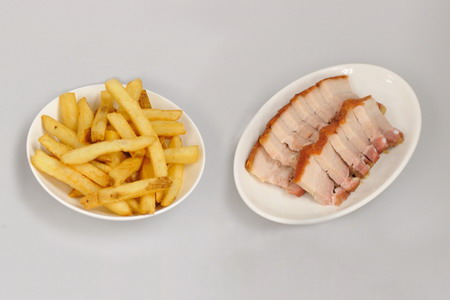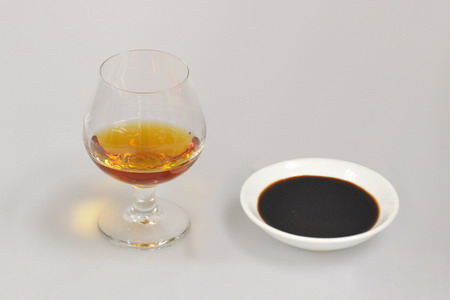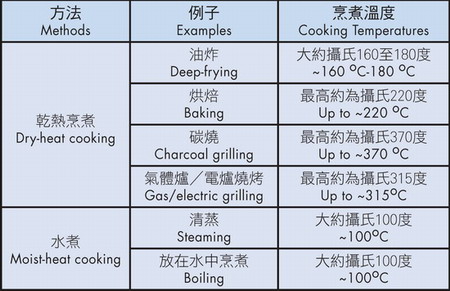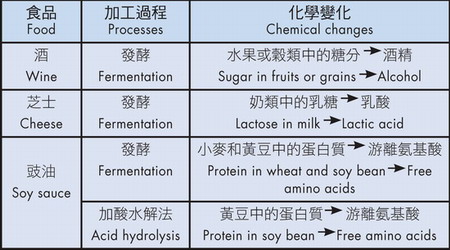
Food Safety Focus (63rd Issue, October 2011) – Food Safety Platform
Process Contaminants in Food
Reported by Ms. Melva CHEN, Scientific Officer,
Risk Assessment Section, Centre for Food Safety
Process contaminants refer to chemicals formed unintentionally during certain food processing methods. Some of the chemicals are harmful and may even cause cancers. What are the food processing methods that can generate such undesirable chemicals?
Processes that Generate Food Contaminants
Food substances are chemical in nature. Theoretically, as long as a process causes chemical changes in food, it will generate chemicals and some of them could be harmful. Process contaminants are chemical substances that are produced in food during food manufacturing, cooking (including home cooking), packaging and other processing activities. The best known processes that cause substantial changes in food include cooking, fermentation and acid hydrolysis.

Examples of process contaminants produced by dry-heat cooking include acrylamide in French fries and PAHs in roasted pork

Process contaminants such as ethyl carbamate may be generated during fermentation in wine and soy sauce and 3-MCPD during acid hydrolysis in soy sauce
(1) Dry-heat Cooking
In dry-heat cooking, either air or fat is used as the medium of cooking. A higher temperature can be achieved as compared with moist-heat cooking, which uses water and steam as the medium of cooking. Some common process contaminants such as acrylamide, polycyclic aromatic hydrocarbons (PAHs) and heterocyclic amines (HCAs) can be formed during dry heat cooking.
Table 1: Dry-heat Cooking Usually Reaches a Much Higher Temperature
(2) Fermentation and Acid Hydrolysis
Fermentation and acid hydrolysis are two commonly used methods to breakdown or convert food components into small molecules. During these processes, many reaction products are formed. Some of these products such as ethyl carbamate and 3-MCPD are undesirable and are classified as process contaminants.
Table 2: Chemical Changes of Some Foods by Fermentation and Acid Hydrolysis
Reducing Process Contaminants
The formation of process contaminants in food is unavoidable but they can be reduced by, for instance, lowering cooking temperature and reducing cooking time. International and national food safety authorities and food industries have been investigating the mechanisms of the formation of process contaminants in food; developing ways to reduce process contaminant formation in both industrial and home settings; conducting food product surveys; and updating on relevant health risk assessments.
From the consumer perspective, a balanced diet without overindulgence of particular foods, such as alcoholic beverages, deep fried, barbecued or fermented foods contribute to reducing exposure to process contaminants.
The Centre for Food Safety has been keeping in view the international development and scientific findings, and conducting risk assessment studies on some process contaminants. In the coming two issues, we will further discuss some common process contaminants formed during cooking, fermentation and acid hydrolysis respectively.




